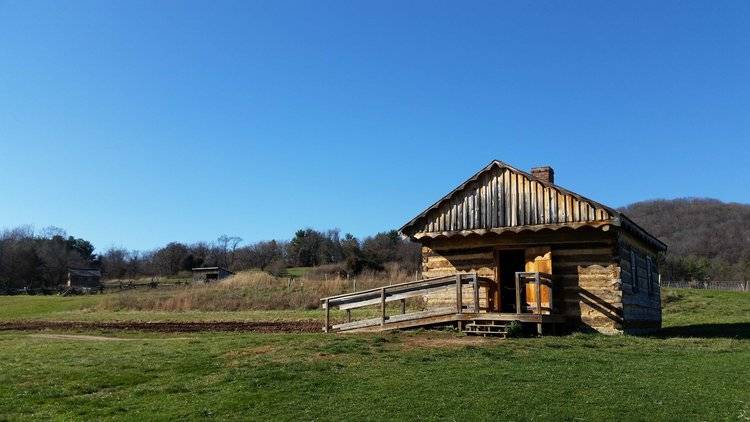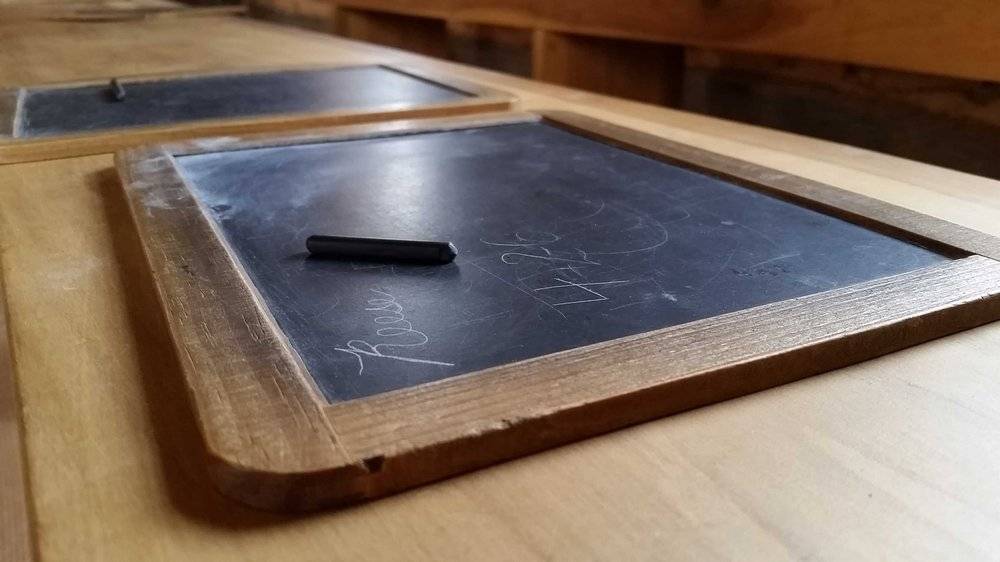Lecture Series
School House, 1840s

The log school house at the Museum was built around 1840 and originally located in Rockingham County. Education in the American colonies and the early United States was limited and the idea of compulsory, tax-supported public-school system was discussed but not widely practiced until well after the Civil War.
Farming families in rural and remote areas often took the education of their children in their own hands and built rural schools. Neighboring families purchased the school books, recruited and paid the teacher, provided him with room and board, and kept the schoolhouse repaired and supplied. The children were educated so they could participate in the market economy, and the educational goals were functional literacy and basic math skills over academic scholarship.
Teachers at rural schools were usually itinerant men who would only stay for a matter of a few months. Then they moved on to another similar situation elsewhere in the neighborhood or beyond. School sessions were irregular depending on the availability of a teacher.

Another reason for irregular schooling was that children and youths in rural America in the 1800s were always needed to work on the family farm. The needs of the household typically came before education.
The goals and expectations of schooling in the early United States were modest by current standards. Yet many Americans in the 1700s and 1800s could read, write, and perform basic mathematical calculations.
Many of those considered able to read and write could read only short simple passages from the Bible, an almanac or newspaper, or an official document. Some might be able to write their name and keep short entry household accounts. Old letters or account books produced in early American farming households, rural stores, or even official documents show numerous examples of unconventional spellings and sentence structures.
